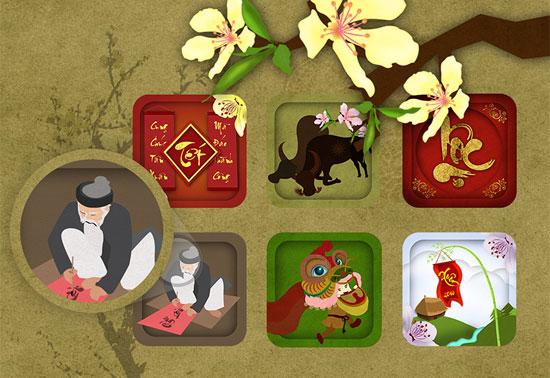“Tet”, simply meaning festival, is the accepted name for Vietnam’s most important annual event, properly known as Tet Nguyen Dan, or festival of the first day.
>>> Tips for visiting dalat vietnam
If you wanna travel to Vietnam but don’t know anythings about Vietnam travel, you can look at in this topic.
“Tet”, simply meaning festival, is the accepted name for Vietnam’s most important annual event, properly known as Tet Nguyen Dan, or festival of the first day. Tet lasts for seven days and falls sometime between the last week of January and the third week of February, on the night of the new moon. This is a time when families get together to celebrate renewal and hope for the new year, when ancestral spirits are welcomed back to the household and when everyone in Vietnam becomes a year older – age is reckoned by the new year and not by individual birthdays.
There’s an almost tangible sense of excitement leading up to midnight on the eve of Tet, though the welcoming of the new year is now a much more subdued – and less dangerous – affair since firecrackers were banned in 1995. Instead, all the major cities hold fireworks displays.
Tet kicks off seven days before the new moon with the festival of Ong Tau, the god of the hearth (23rd day of the twelfth month). Ong Tau keeps watch over the household throughout the year, wards off evil spirits and makes an annual report of family events, good or bad, to the Jade Emperor. In order to send Ong Tau off to heaven in a benevolent mood, the family cleans its house from top to bottom, and makes offerings to him, including pocket money and a new set of clothes. Ong Tau returns home at midnight on the first chime of the new year and it’s this, together with welcoming the ancestral spirits back to share in the party, that warrants such a massive celebration.
Tet is all about starting the year afresh, with a clean slate and good intentions. Not only is the house scrubbed, but all debts are paid off and those who can afford it have a haircut and buy new clothes. To attract favourable spirits, good-luck charms are put in the house, most commonly cockerels or the trinity of male figures representing prosperity, happiness and longevity. The crucial moments are the first minutes and hours of the new year as these set the pattern for the whole of the following year. People strive to avoid arguments, swearing or breaking anything – at least during the first three days when a single ill word could tempt bad luck into the house for the whole year ahead. The first visitor on the morning of Tet is also vitally significant: the ideal is someone respected, wealthy and happily married who will bring good fortune to the family; the bereaved, unemployed, accident-prone and even pregnant, on the other hand, are considered ill-favoured. This honour carries with it an onerous responsibility, however: if the family has a bad year, it will be the first-footer’s fault.
The week-long festival is marked by feasting: special foods are eaten at Tet, such as pickled vegetables, candied lotus seeds and sugared fruits, all of which are first offered at the family altar. The most famous delicacy is banh chung (banh tet in the south), a thick square or cylinder of sweet, sticky rice that is prepared only for Tet. The rice is wrapped round a mixture of green-bean paste, pork fat and meat marinated in nuoc mam, and then boiled in banana leaves, which impart a pale green colour. According to legend, an impoverished prince of the Hung dynasty invented the cakes over two thousand years ago; his father was so impressed by the simplicity of his son’s gift that he named the prince as his heir. Tet is an expensive time for Vietnamese families, many of whom save for months to get the new year off to a good start. Apart from special foods and new clothes, it’s traditional to give children red envelopes containing li xi, or lucky money, and to decorate homes with spring blossoms. In the week before Tet, flower markets grace the larger cities: peach blossoms in the north, apricot in Hué and mandarin in the south. Plum and kumquat (symbolizing gold coins) are also popular, alongside the more showy, modern blooms of roses, dahlias or gladioli.


